Pediatric posterior sagittal anorectal vaginal urethroplasty (PSARVUP)
Our skilled pediatric colorectal surgeons, urologists, and gynecologists have experience in posterior sagittal anorectal vaginal urethroplasty (PSARVUP), surgery to correct structural problems in a baby girl’s pelvic organs. At the Colorectal and Pelvic Center at Children's Health℠, our surgeons, nurses and other providers specialize in caring for children with complex conditions of the intestines, urinary tract and reproductive organs. We offer compassionate care to help your child enjoy their best health and quality of life.
What is pediatric posterior sagittal anorectal vaginal urethroplasty (PSARVUP)?
Posterior sagittal anorectal vaginal urethroplasty (PSARVUP) is reconstructive surgery to treat a cloacal malformation, also called cloaca or persistent cloaca. This congenital (present at birth) condition affects the urinary, digestive, and reproductive organs in a baby girl. The result is a single opening, instead of the typical three openings, in the baby’s genital area.
Our surgeons perform a series of staged surgeries, including PSARVUP, for cloacal malformation treatment. Your baby will typically have PSARVUP when they’re at least several months old to separate the single opening into three openings. Your child will likely need other procedures before or after PSARVUP, depending on the specific structural problems related to the cloaca.
What are the benefits of pediatric posterior sagittal anorectal vaginal urethroplasty (PSARVUP)?
Our surgeons perform PSARVUP surgery to correct a cloaca, a type of anorectal malformation that some baby girls are born with. Females are normally born with three openings in their genital area: a urethra for urine (pee), a vagina for reproduction, and an anus for stool (poop). Babies born with a cloaca have only one opening because the urethra, vagina and anus/rectum are connected as a common channel.
PSARVUP creates a more natural structure in your child’s pelvic organs by separating the urethra, vagina and anus into three openings. The key benefit of PSARVUP surgery is that it allows a child born with a cloaca to pass urine and stool more naturally.
A pediatric PSARVUP surgery for cloacal malformations surgery also helps reduce the risk of:
Damage to the kidneys
Problems with reproduction or sexual health, later in life
What are the risks of pediatric posterior sagittal anorectal vaginal urethroplasty (PSARVUP)?
As with any surgery, PSARVUP carries some possible risks, such as:
Infection after surgery
Bleeding from the surgical site
Reaction to anesthesia (medicine to put your child into a sleeplike state for surgery)
Excessive pain
Breakdown of the wound
Strictures (narrowing) in any of the surgically created openings
Children who had cloacal malformations may develop constipation or fecal incontinence (soiling and accidents), even with successful PSARPVUP surgery. These children may benefit from our bowel management program.
In the long term, children who had cloacal malformations may have bladder and kidney problems and require catheterizations (passing a tube to drain urine) or other surgeries to help with bladder control and prevent kidney damage. It’s important for your child to have long-term follow-up care with our team of pediatric urologists to monitor them for any conditions that may develop.
Our years of experience performing PSARVUP helps reduce the risk of rare, potential problems. If a problem occurs, our surgeons and their teams quickly take steps to protect your child’s health. Please contact us immediately if your child gets a high fever or cannot pass urine or stool.
What to expect with pediatric posterior sagittal anorectal vaginal urethroplasty (PSARVUP)
At the Colorectal and Pelvic Center, our surgeons have extensive experience in successfully performing PSARVUP for the most complex cloacal malformations in infants and children. Depending on the specific structures affected by the cloaca, your child may need one or more surgeries over several months to fully correct the condition.
Together with our teams, we also provide expert care before and after your child’s procedures to ensure they have the best possible urinary, bowel, and reproductive function.
What to expect before pediatric posterior sagittal anorectal vaginal urethroplasty (PSARVUP)
A cloacal malformation can cause a child to have difficulty passing urine, stool or both. Sometimes urine can build up in the vagina, rather than passing through the common channel. The vagina can then get very large and block the kidneys from draining urine.
If urine builds up, your child will need a procedure to drain the vagina, either catheterization (passing a soft tube up the common channel) or a drain (surgically placing a different soft tube into the vagina). Either of these procedures relieves the blockage to prevent long-term damage to the kidneys.
To allow stool passage, your child will have surgery to create a colostomy, usually within days after birth. In this procedure, the surgeon creates an opening in the belly and connects the large intestine to it. Your child will have a collection bag attached to the opening to allow stool to exit the body.
A colostomy doesn’t affect your child’s eating and digestion, and they will continue to grow before the PSARVUP procedure. This colostomy is temporary until after your child has healed from the PSARVUP procedure.
When your child is about five to six months old, our surgeons plan the PSARVUP procedure. We do imaging and other tests to examine the structures and check for any other malformations that may also need repair. For this procedure, your child will have anesthesia (medicine that puts them in a sleeplike state so that they feel no pain).
What to expect during pediatric posterior sagittal anorectal vaginal urethroplasty (PSARVUP)
We usually recommend PSARVUP surgery when your child is about eight to nine months old and will discuss the timing with you. The goal is to restore not only your child’s anatomy, but also improve their lifelong urinary, bowel and reproductive function. We will discuss with you the type of repair that’s best for your child’s specific anatomy (internal structures) and health needs.
In some cases, the surgeon repairs the cloaca with a single incision between the buttocks (posterior approach). For more complex cloacal malformations, your child may need an abdominal (belly) incision in addition to the posterior incision.
What to expect after pediatric posterior sagittal anorectal vaginal urethroplasty (PSARVUP)
Your child will recover in the hospital for several days after PSARVUP. Your child will go home from the hospital with a urinary catheter (soft tube) to help them pass urine. Their first follow-up visit will be a few weeks after surgery, and we’ll examine them to ensure they’re healing well without any issues.
You may need to perform anal dilations to help prevent scar tissue from closing the newly created anus. Your child’s care team will teach you how to perform dilations, which you will do at home until the anal area heals.
After two to three months, we will operate again to close the colostomy and check the urethra, vagina and rectum. After this procedure, your child will pass stool through the large intestine and out of the body through the rectum and anus.
A child who has had a cloaca may have difficulty with toilet training. At our Colorectal and Pelvic Center, we offer a comprehensive bowel management program to help your child achieve bowel control. We work closely with you and your child to customize a program specifically for their unique needs.
How do I prepare my child for pediatric posterior sagittal anorectal vaginal urethroplasty (PSARVUP)?
Your child’s care team will explain how to prepare your child for surgery.
Here are some general steps:
Depending on the specific nature of the cloaca, your child may need to go to the hospital the day before surgery for a bowel prep.
If your child does not need to go to the hospital the day before surgery, the nurse will call you 48 hours (2 days) before the surgery date. They will explain:
Guidelines for your child’s food and drink
What time you need to arrive at the hospital
If your child takes medicine, ask the care team whether they should stop or keep taking it before surgery. Don’t give your child any medicine on the morning of surgery unless your child’s care team tells you to.
On the day of surgery, the care team will make sure your child is ready for surgery.
What questions should I ask my provider aboutpediatric posterior sagittal anorectal vaginal urethroplasty (PSARVUP)?
As you decide on treatment options for your child, some questions you may want to ask include:
Are there other treatment options for a cloaca?
How soon will I be able to see my child after PSARVUP?
How long will my child need to stay in the hospital after PSARVUP?
Will my child go home with any special equipment after PSARVUP?
Pediatric posterior sagittal anorectal vaginal urethroplasty (PSARVUP) doctors and providers
At Children’s Health, we’re committed to providing the best possible care for your child, from infancy through young adulthood. Our expert team of colorectal surgeons, urologists, gynecologists, gastroenterologists, psychologists and Child Life specialists is ready to support you and your child throughout their journey.
 Dai Chung, MDPediatric Surgeon
Dai Chung, MDPediatric Surgeon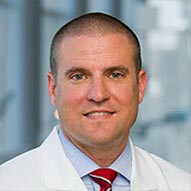 Adam Alder, MDPediatric Surgeon
Adam Alder, MDPediatric Surgeon Shane Batie, MDPediatric Urologist
Shane Batie, MDPediatric Urologist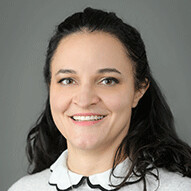 Nathalie Brewer, MDPediatric Surgeon
Nathalie Brewer, MDPediatric Surgeon Natasha Corbitt, MDPediatric Surgeon
Natasha Corbitt, MDPediatric Surgeon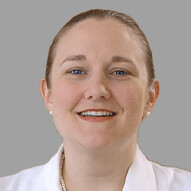 Diana Diesen, MDPediatric Surgeon
Diana Diesen, MDPediatric Surgeon Barbara Gaines, MDPediatric Surgeon
Barbara Gaines, MDPediatric Surgeon Lauren Gillory, MDPediatric Surgeon
Lauren Gillory, MDPediatric Surgeon Charles Hong, MDPediatric Surgeon
Charles Hong, MDPediatric Surgeon Micah Jacobs, MDPediatric Urologist
Micah Jacobs, MDPediatric Urologist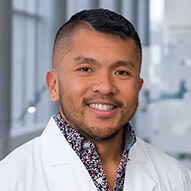 Jason Jarin, MDPediatric Gynecologist
Jason Jarin, MDPediatric Gynecologist Stephen Megison, MDPediatric Surgeon
Stephen Megison, MDPediatric Surgeon Joseph Murphy, MDPediatric Surgeon
Joseph Murphy, MDPediatric Surgeon Samir Pandya, MDPediatric Surgeon
Samir Pandya, MDPediatric Surgeon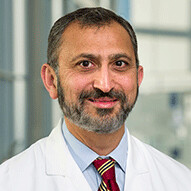 Faisal Qureshi, MDPediatric Surgeon
Faisal Qureshi, MDPediatric Surgeon Mark Ryan, MDPediatric Surgeon
Mark Ryan, MDPediatric Surgeon Irina Stanasel, MDPediatric Urologist
Irina Stanasel, MDPediatric Urologist Sharon Kluger, APRN, PNP-AC/PCNurse Practitioner - Pediatric Surgery
Sharon Kluger, APRN, PNP-AC/PCNurse Practitioner - Pediatric Surgery